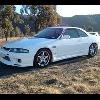Announcements
-
Similar Content
-
Latest Posts
-
By soviet_merlin · Posted
Nice! I hope it all works out. At least now you know the track as well and can build from last year. Looking forward to see your car in action again. Ooof. Godspeed! -
We let the engine warm up as much as it could while stationary and with the head check plugged into the open radiator but I see you're point that it would be difficult to get it to the point where it begins to overheat. The overheating issue only began after the initial problem with the empty radiator. Until then I had driven the car almost daily without any issues (with the gktech fan etc.) I'm beginning to suspect butters may be right and that it's a head gasket issue, just difficult to find the time to work on the car lately. And whether or not it's even worth doing the head gasket etc. on the 20 when I am, extremely slowly, building a 25 for this car.
-
Yeah, alright, I take it back. I hadn't bothered to compare the terminal numbers - they're not the same. I was working on the presumption that it was the "small plug" half of the HICAS CU because it has the same plug as the small plug on the HICAS CU. And...the drawing says "Refer to Super HICAS system circuit diagram" which seemed to place it firmly in the world of HICAS, not non-HICAS.
-
By joshuaho96 · Posted
You definitely have a big problem if with the adjustment screw closed up you're idling at 1200 rpm. Have you verified you have no vacuum leaks? No throttle shaft seal leaks? Nobody has messed with the throttle body set screws? I would love to see what Consult reports when your engine is idling that high. -
By joshuaho96 · Posted
HICAS has a much more complicated circuit diagram, for some reason the R32 GTR service manual discusses both. The HICAS module has proper 2 way communication over consult, the "EPS control unit" doesn't have any of that and only exposes a raw analog voltage for the EPS solenoid valve. It's ultimately mostly about speed sensitive steering but the non-HICAS unit also looks at the neutral switch/brake/clutch switch to adjust how it provides assist.
-




Recommended Posts
Create an account or sign in to comment
You need to be a member in order to leave a comment
Create an account
Sign up for a new account in our community. It's easy!
Register a new accountSign in
Already have an account? Sign in here.
Sign In Now